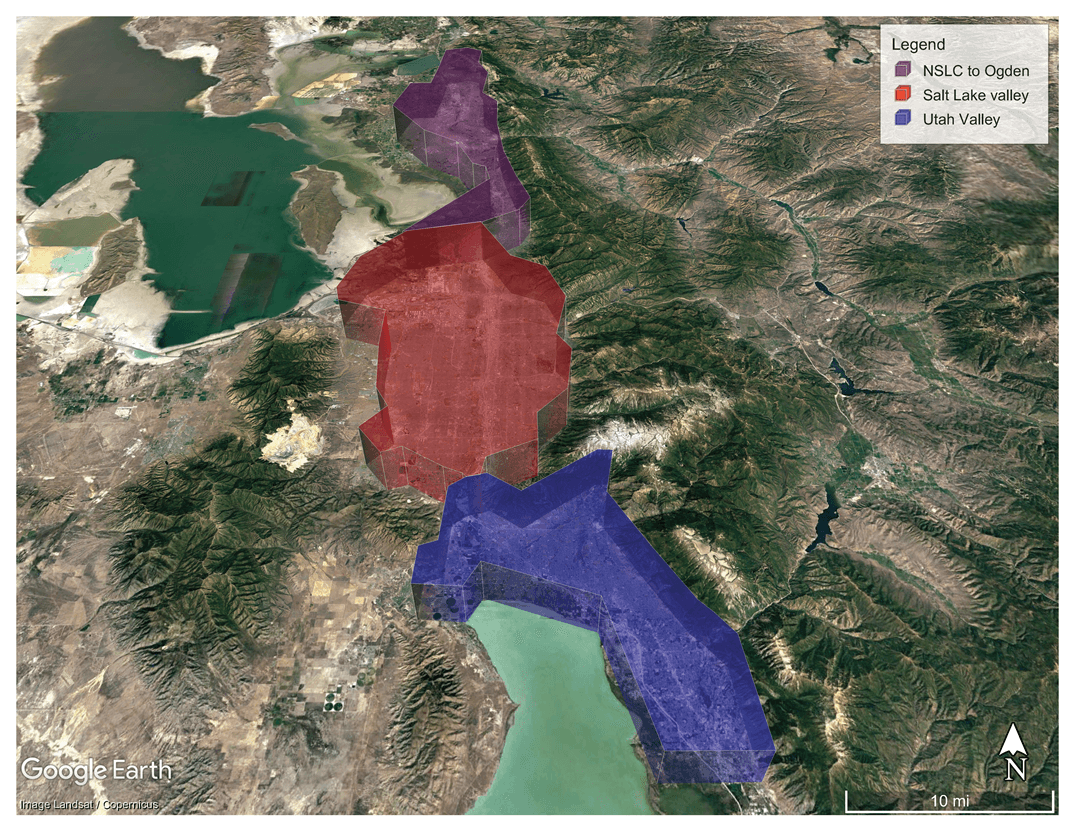
uam.1
Utah Department of Transportation (UDOT), Division of Aeronautics is moving forward with plans to set up UAM operations network, so-called Highways in the Sky, in Utah starting with transporting medical materials on the University of Utah campus as the first stage of creating a network for UAM aircraft operations in Utah.
UDOT is working with stakeholders to digitize the airspace for more than 120 miles down the Wasatch Valley, including Salt Lake City. By leveraging existing infrastructure, including ADS-B, the current statewide GPS-RTK network, and low altitude radar systems, UDOT will be able to begin to build out the UAM network as soon as next year.
The first stage in developing the UAM network will begin with a partnership with the University of University Utah Health care team and key industry partners, including service provider to operate the flights. The initial routes will be within visual line of sight and include transporting surgical toolkits, lab specimens, IV Fluids, and drugs for cancer treatments.
By next summer, Utah plans to invest in the required infrastructure for Beyond Visual Line of Sight (BVLOS) medical deliveries. According to Jared Esselman, UDOT Director of Aeronautics, “research utilizing unmanned aerial systems for aerial package delivery will allow us to safely test an Urban Air Mobility system on a smaller scale while significantly improving the quality of healthcare delivery to Utah patients.”
Esselman envisions UDOT will implement the supporting systems to establish a UAM Aerial Traffic Operations Center (ATOC) to actively manage low altitude air traffic, provide real-time notification of any alterations in flight paths, and communicate hazards or arrange airspace priority rerouting to UAS Service Suppliers (USS).
UDOT is developing Highways in the Sky by creating corridors above the roadways, which UDOT already manages. By operat ing above roadways, many of the privacy and noise concerns expressed by consumers would be minimized.
ing above roadways, many of the privacy and noise concerns expressed by consumers would be minimized.
Conceptually, the Highways in the Sky with planned flight corridors with assigned altitudes by the direction of flight. UDOT envisions speed Limits on “Lanes.” While all types and models UAM commercial vehicles will be operating in the network, the vehicles must be “Street Legal,” which means there will be minimum vehicle operating standards.
UDOT would create and maintain the infrastructure for the Highways in the Sky, just like the responsibilities the department has for surface highways.
While recently announced other medical and package deliveries launched by Google’s Wing and UPS, including North Carolina and Maryland, prove that the technology is ready for drone deliveries, Essleman sees drone medical delivery as the steppingstone to enabling a much larger network for UAM operations. “The entirety of the system does not need to be built all at once. Components may be put in place as demand for corridors grows. These components will be built within the context of a larger system plan” according to Esselman.
Views: 0



